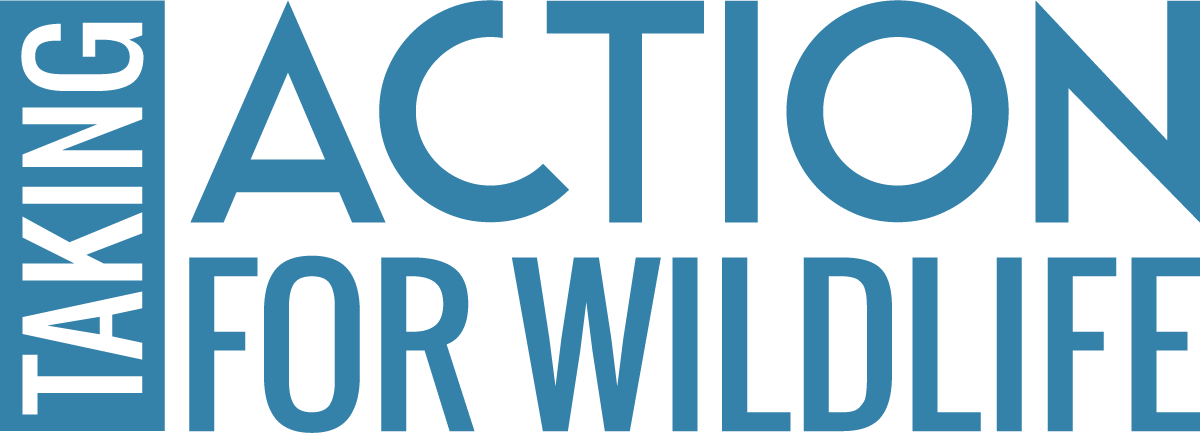31,000 Butterflies and Counting
While recent research has indicated that butterflies likely originated around 100 million years ago, the last two years have brought a renewed focus to learning more about these species in New Hampshire. Butterflies serve as important biodiversity indicators for ecosystem health and provide food for many organisms, such as migrating birds, but data on their presence and distribution is limited. There is a lot we don’t know about the over 130 species of butterflies that occur in New Hampshire, but that is slowly changing – thanks to organizations, volunteers, and butterfly enthusiasts all over the state helping to collect more data on these small, colorful creatures.
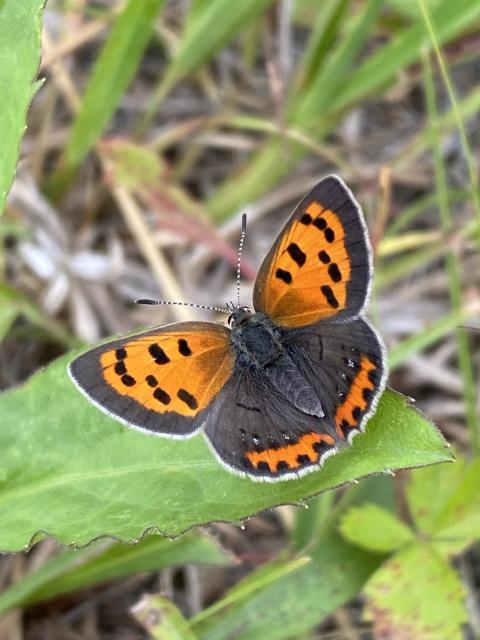
An American Copper butterfly - one of the more than 130 species documented in New Hampshire - was spotted during this year's Capital Area July Count Circle. Photo by Diane DeLuca.
Under the leadership of NH Fish & Game Department, the NH Butterfly Monitoring Network launched in 2023 as an effort to engage volunteers in counting and identifying butterflies across New Hampshire. Data collected by volunteers can contribute to our understanding of long-term trends in butterfly populations and inform conservation actions for both common and declining species. Volunteers can contribute in a variety of ways – including through formal surveys and the collection of opportunistic data.
Count circles are the site of annual participatory science events at 450 locations throughout North America, and cover a 15-mile diameter circle that has been registered with the North American Butterfly Association. Coordinators enlist the help of volunteers to inventory as many butterflies and species as possible at sites in that circle during the course of one day, typically in July. Prior to 2023, there was only one formal volunteer butterfly survey in New Hampshire. Founded by butterfly enthusiast George DeWolf and located at the southwestern edge of the White Mountain National Forest, the Baker Ponds Count Circle was started in 2004 – making this their 21st year of data collection.
Seeing a need for more boots on the ground collecting butterfly data across the state, New Hampshire Fish & Game reached out to conservation organizations, land trusts, and University partners interesting in getting involved. By 2023, six additional circles were formalized statewide. The Lake Sunapee, Great Bay, Conway Area, Super Sanctuary (Monadnock Region), Capital Area, and Errol count circles have all been engaging volunteers in collecting data at July Counts for the past two years.
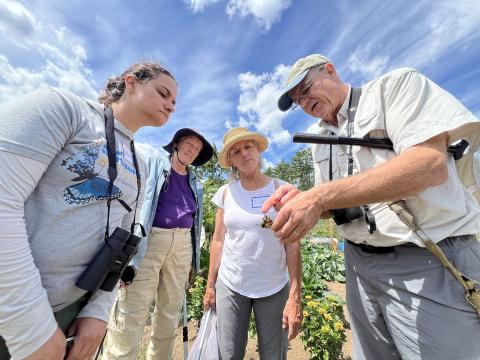
A group of volunteers work to identify a butterfly in the field during this year's Super Sanctuary July Butterfly Count. Photo by Brett Amy Thelen.
In addition to these formal surveys, the NH Butterfly Monitoring Network encourages volunteer observers from all over the state to submit their sightings to an iNaturalist project. While count circle participants can and do submit their observations to this project, the ‘anytime, anyplace’ approach to data collection has made a big difference in filling in some of the gaps for butterfly information in New Hampshire.
With more volunteers getting involved each year, we have seen incredible growth in observations in the NH Butterfly Monitoring Network’s iNaturalist project. For the first time this year, the project exceeded 1,000 observers submitting sightings to the project – which helped make it the first year with more than 10,000 butterfly observations. Contributors to the project are now consistently observing over 100 butterfly species each year, which means that more consistent data is being collected that can help determine where and when certain species are found and how that might change over time.
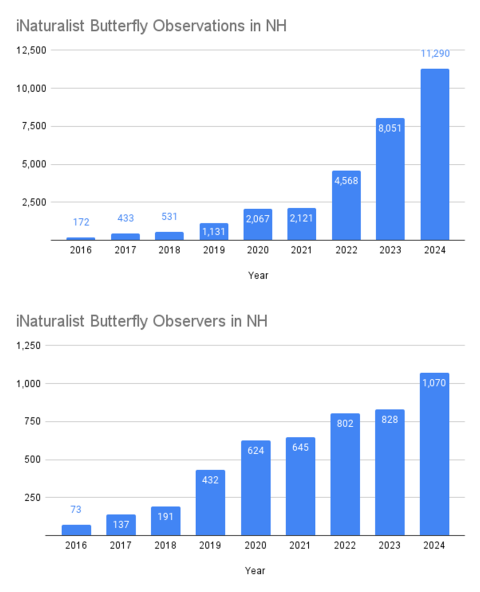
These graphs, created by Baker Ponds Count Circle coordinator George DeWolf, demonstrate the growth in butterfly observations submitted to iNaturalist in recent years, as well as the increase in the number of individuals submitting observations each year.
“Through the efforts of the New Hampshire Butterfly Monitoring Network, we’ve witnessed a remarkable transformation in how our communities engage with these beautiful creatures. By fostering a passion for butterfly observation and providing education, we’ve empowered citizens to advocate for their protection,” shared George DeWolf, the Baker Ponds Count Circle coordinator. “The significant rise in iNaturalist observations is a testament to this growing interest, revealing both positive and negative trends in butterfly populations. This data allows us to focus on the environmental factors influencing these changes, highlighting the vital role butterflies play as indicators of our ecosystem’s health.”
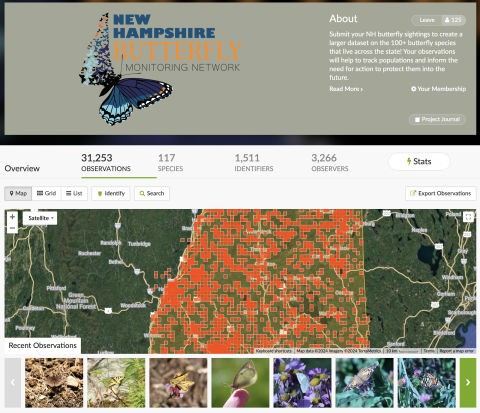
The NH Butterfly Monitoring Network on iNaturalist currently has over 31,000 observations submitted by more than 1,500 observers.
With butterflies using forests, fields, wetlands, and backyards all over the state, volunteer observations are critical to providing a landscape view of these species. With the help of volunteer observers, there have been more than 31,000 butterfly observations made in New Hampshire on iNaturalist – and counting!
For more information on how to get involved with the NH Butterfly Monitoring Network, visit nhbutterflies.org. You’ll find information on connecting with a local count circle, how to share your observations, and resources for identifying New Hampshire’s butterfly species. Keep an eye on the calendar for training sessions to be scheduled for spring 2025.

